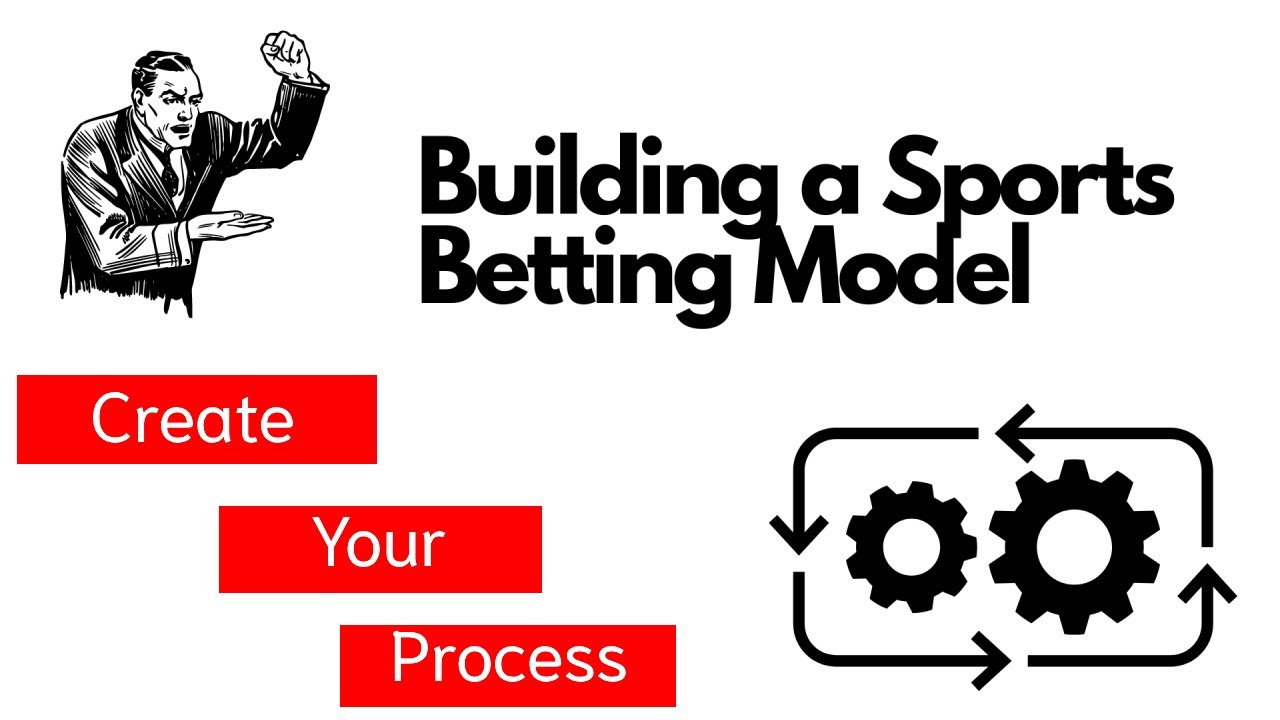How to make a sports betting model

Building your model and entering data. Test how to make a sports betting model analyse. Step 1: Choose Your Goal, Make it Specific and Actionable. So you want to make money, but your goal can't be that broad. It has to be based on. Building a model is both an art and a science. Use your knowledge of the game to try and capture nuances that you think Vegas overlooks. Develop.
Unveiling the Craft: Crafting Your Sports Betting Model
When it comes to sports betting, a well-crafted model can significantly enhance your chances of success. Building your own sports betting model requires a blend of statistical analysis, sports knowledge, and a strategic mindset. Here, we delve into the essential steps to help you embark on this thrilling journey of sports forecasting.
The Foundation: Data Collection and Analysis
Central to creating a successful sports betting model is robust data collection and analysis. Start by gathering historical sports data relevant to your area of interest. This comprises factors like team performance, player statistics, injuries, weather conditions, and other variables that could influence outcomes. Organize this data into a structured format to aid in future analysis.
Once your data repository is set, it's time to delve into the analysis. Dig deep into statistical techniques such as regression analysis, machine learning algorithms, and other analytics tools to derive valuable insights. These analyses will help you identify patterns, trends, and correlations that can inform your betting decisions.
Model Development: The Building Blocks
With a solid dataset at your disposal, it's time to construct your betting model. Embrace mathematical models that suit your preferences, whether it's a simple linear model or a more complex neural network approach. The key is to fine-tune your model continuously based on its performance and feedback loops.
Define the parameters that drive your model, such as team form, head-to-head records, venue advantages, and any other variables that you deem significant. Experiment with different weighting schemes for these factors to optimize your model's predictive capabilities. Remember, flexibility is key in refining your model over time.
Testing and Validation: Refining Your Model
Testing your sports betting model is crucial to assess its accuracy and effectiveness. Utilize historical data to backtest your model and evaluate its predictive capabilities against past outcomes. Identify areas where your model excels and areas that warrant improvement.
Validation is essential to ensure that your model is reliable and robust. Use a subset of data that your model hasn't seen before to evaluate its performance in real-time scenarios. Improvements may involve recalibrating the model's parameters or incorporating additional variables for enhanced accuracy.
Embracing the Art of Prediction
In conclusion, the art of crafting a sports betting model lies in the fusion of meticulous data analysis, model development, testing, and continuous refinement. Remember, no model guarantees absolute success in sports betting, but a well-crafted model can certainly tilt the odds in your favor.
With perseverance, dedication, and a deep understanding of the sports you wager on, you can elevate your sports betting experience to new heights. So, roll up your sleeves, immerse yourself in the data, and embark on the exhilarating journey of building your sports betting model.
How To Build A Sports Betting Model In Excel
Intro to Data Science: The Road to Sports Betting Models
Gambling Taxes FAQ. Latest Videos. Learn About The Props Simulator. Learn about the CLV Calculator. Learn about the Compare Lines Calculator. Learn about the Derivatives Calculator. Ten ways to win at sports betting How do I become a professional sports bettor. Is arbitrage betting worth it?
Should I hedge my bet. How can I avoid getting limited at sportsbooks. If you want to do some reading in your spare time, this extensive sports analytics bibliography from Notre Dame professor Scott Nestler will keep you busy for a long, long time. Odds Edge Rusher. Other Sports. Jason Scavone. Intro to Data Science.
Are you ready. Learn From The Pros. How to make a sports betting model Latest Articles. How to Bet Golf: Analyzing the Course. Gambling Taxes FAQ. Experience seamless data integration from multiple sources with Sourcetable's advanced interface. Embrace the future of data management with Sourcetable's intuitive chat interface.
Say goodbye to complex Excel functions and welcome the simplicity of conversational formula and template assistance. Unify your data with Sourcetable's innovative spreadsheet-like query system, a stark contrast to Excel's singular data source approach. Benefit from Sourcetable's centralized data solution for a comprehensive analytical experience. Streamline your workflow with Sourcetable's all-in-one data collection platform, offering a significant advantage over Excel's limited data consolidation capabilities.
Sourcetable is the go-to solution for efficient and integrated data analysis. Sign me up. Schedule a Demo.  Excel How To's. Jump to Too many steps. Try Sourcetable. Book a demo. Overview Building a sports betting model requires a blend of sports knowledge and data analysis skills. Select Data and Metrics Choose relevant data points and metrics that will form the basis of your model's predictions.
Excel How To's. Jump to Too many steps. Try Sourcetable. Book a demo. Overview Building a sports betting model requires a blend of sports knowledge and data analysis skills. Select Data and Metrics Choose relevant data points and metrics that will form the basis of your model's predictions.
Data Collection and Modification Gather statistical data pertinent to your model.
Popular Pages
- How to register for sports betting.ag
- Is sports betting a waste of time
- How to bet sports online from usa
- Can you get rich off sports betting
- What does mean in sports betting
- Will sports betting be legal in ohio
- What does juice mean in sports betting
- How to make a lot of money sports betting
- How do you bet on sports
- What states have legal sports betting